Prayagraj: Walking on the road is a nightmare for the 18-year-old in Uttar Pradesh’s Kasganj. When she steps out, people sneer and laugh at her, while her perpetrators roam free, still intimidating her. Four years ago, this OBC girl was assaulted by upper caste men of her village, who allegedly groped her breasts, and broke the drawstrings of her pyjamas before passersby stopped them. The girl sought justice, but what happened at the Allahabad High Court broke her spirit.
The judge wasn’t interested in what happened; instead focused on modalities—was her pyjama pulled down? Was there penetration?
According to the court, grabbing a girl’s breasts, breaking her pyjama strings, and trying to drag her into a gutter is not enough to charge her perpetrators with rape.
“No other act was attributed to them (the accused) to further their alleged desire to commit rape on the victim,” Justice Ram Manohar Narayan Mishra had ruled on 17 March. The ruling was stayed by the Supreme Court as it called it “totally unknown to the canons of law”, as well as “insensitive and inhuman”.
The Allahabad High Court has been letting a lot of people down lately. A series of questionable orders has even made the Supreme Court fume. Law students in the city are disheartened, and women’s rights organisations are enraged. Lawyers are scrambling to find reasons for the slide. And everyone—including Supreme Court justices—is asking: What’s happening in Allahabad High Court?
For many, Allahabad HC is now just a pale and unfortunate shadow of its glorious past. The 159-year-old court has a storied reputation. Motilal Nehru practised here. Former Supreme Court Chief Justice D.Y. Chandrachud, Tej Bahadur Sapru, and Markandey Katju served here. A court that once had the power to bring down the government of Prime Minister Indira Gandhi doesn’t inspire the same confidence in its lawyers and litigants today. In fact, its outlandish and regressive rulings have become fodder for bar gossip across Indian courts today.
From blaming rape survivours by saying “she herself invited trouble” to claiming that “scientists believe that the cow is the only animal that inhales oxygen and exhales oxygen too” in bail orders, and even asking vulnerable couples to “face the society” and not approach the court for protection, language of some orders fails to inspire confidence in the court’s justice delivery system.
There is palpable disquiet inside the High Court, too. Lawyers whisper about bhai-bhatijawad (nepotism), Delhi-imports and partisanship, and a dominant upper-caste, bro-culture in this primary court of India’s largest state, Uttar Pradesh. What’s worse, pendency and vacancies in this court are the highest in India.
“Is it a human task to be able to decide on 15,000 cases in a day? Do you know how much pressure that is?” a former justice said.
The Allahabad High Court is the fourth oldest in the country, and the country’s biggest. It has 64 judges in Prayagraj and 23 judges on the Lucknow bench. It is the most burdened court in the country, with each judge under the burden of listening to more than 15,000 cases a day on average. According to the India Justice Report 2025, at 50.6 per cent, the vacancies in the Allahabad High Court are the highest. The case clearance rate of the court is currently at its worst, at just 78 per cent. It has fallen from the case clearance of 102 per cent clocked in 2022, according to the same report.
“The Allahabad High Court, with its huge number of judges and a vast army of lawyers, lacks cohesion, unlike other courts. Caste, religion and fundamentalism have played a big role in judicial appointments, for which the High Court and Supreme Court collegiums are to blame,” Rajeev Dhavan, senior advocate at Supreme Court, said.
“Fuelled by motivated litigants and lawyers to whom judges pay acute attention, the problem is exacerbated and drives many judgments. A great court has lost its glory and effectiveness.”
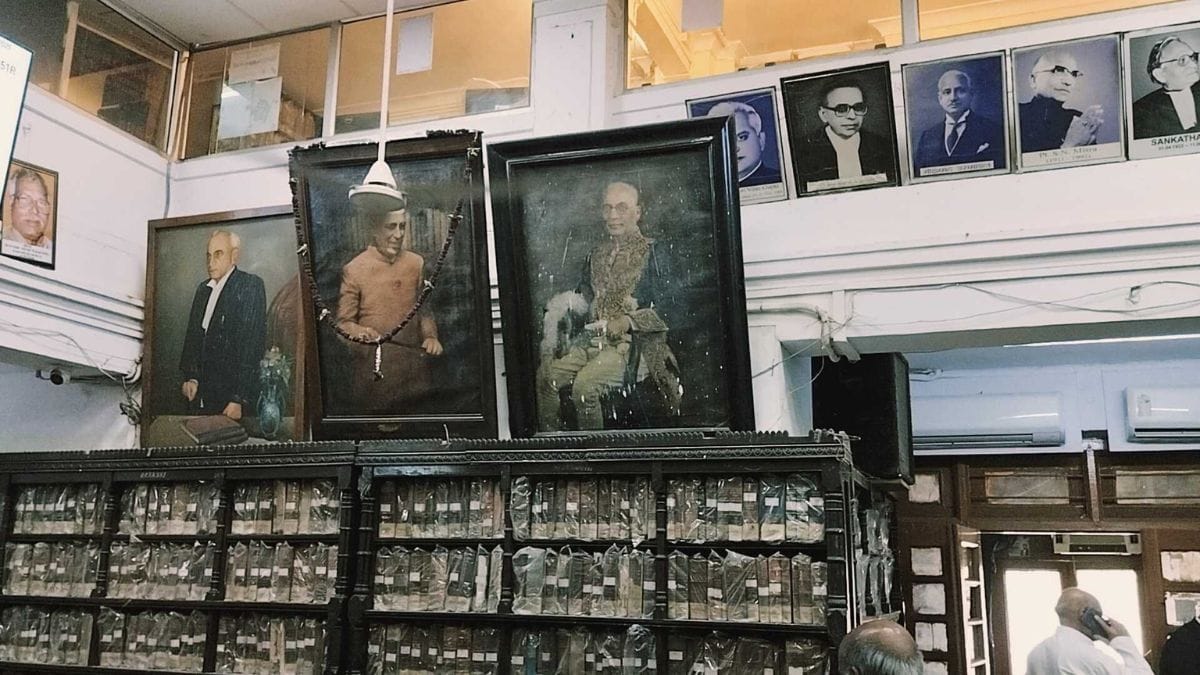
Questionable verdicts
“What is the point of a justice delivery system, if in today’s day and age, a woman is humiliated like this in the court of law?” said the survivour.
On a cool November evening in 2021, Asha Devi was walking home with her daughter when two villagers offered her then 14-year-old daughter a lift on their bike. Asha agreed, but the men didn’t take the minor home. Instead, the daughter was molested by the two who grabbed her breasts, and allegedly tried to “take her” under a culvert, breaking the strings of her pyjamas.
The strings became germane to the Allahabad High Court’s ruling. And that’s what shocked many in the country.
Hearing a revision petition, Justice Ram Manohar Narayan Mishra had noted that due to interference by witnesses, the accused had tried to bring down the ‘lower garment’ of the girl and broken its string, but this fact was not enough to establish that the accused desired to rape her.
“The specific allegation against Akash (the accused) is that he tried to drag the victim beneath the culvert and broke the string of her pyjama. It is also not stated by witnesses that due to this act of the accused, the victim got naked or got undressed. There is no allegation that the accused tried to commit penetrative sexual assault against the victim,” the order reads.
“The allegations levelled against the accused Pawan and Akash and facts of the case hardly constitute an offence of attempt to rape in the case. In order to bring out a charge of attempt to rape, the prosecution must establish that it had gone beyond the stage of preparation.”
It had been a Herculean task for the survivour to even bring the matter to the court. Since the assault, allegedly by upper-cast “Thakurs” of the village, life has not been the same for the minor and her family, who are OBCs.
“The upper caste men constantly intimidate us and ask us to drop the charges against them, they enter our house and terrorise us. We feel really unsafe,” Mahaveer Yadav, her father, said.
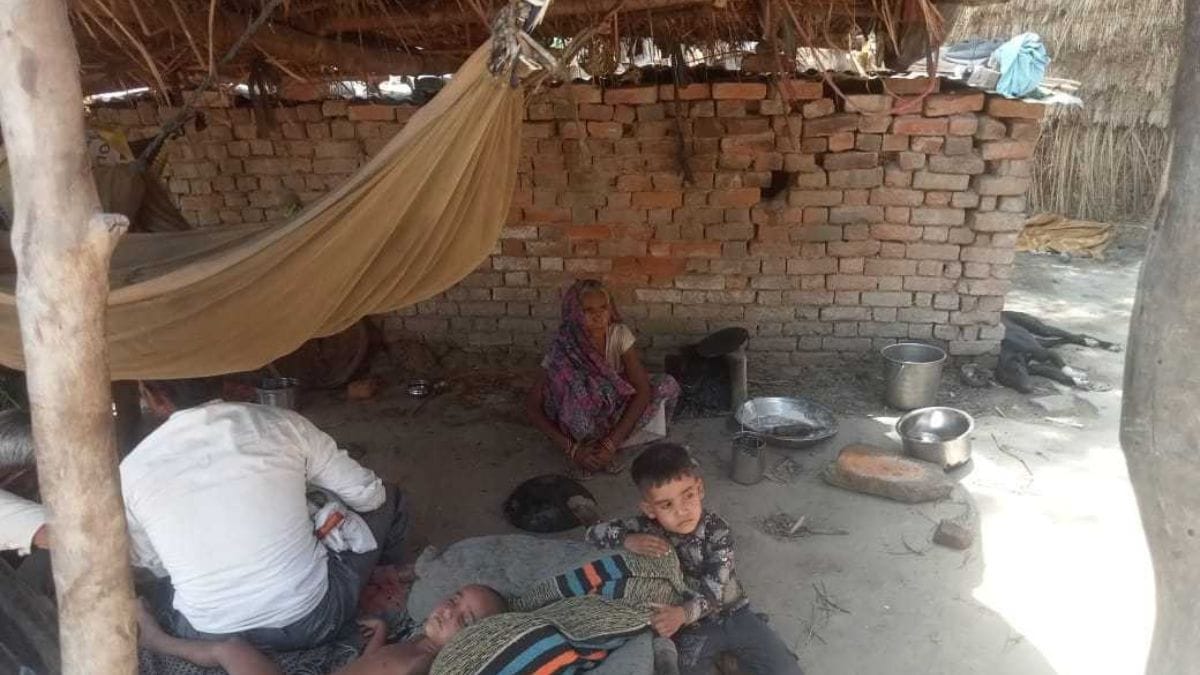
It caused much pain and fear.
But the family had faith in the courts, and dared to pursue the case despite all odds, intimidation, and threats by villagers. So when the Allahabad High Court order came, it shattered the girl. Four years of resilience had come to nought.
“What is the point of a justice delivery system, if in today’s day and age, a woman is humiliated like this in the court of law? I believe in the spirit of ‘Beti Bachao Beti Padhao’ and women empowerment… but when such things are said in court… it breaks every woman’s spirit,” she said.
The judgment was bashed by the Supreme Court, which called it “totally insensitive”, and the Allahabad High Court was asked to take action against Justice Mishra.
But this wasn’t the first or last time in recent years that the High Court became a cause for concern for the Supreme Court.
Justice Sanjay Kumar Singh declared that a Gurugram woman “invited trouble” because she had consumed alcohol, and had voluntarily gone to the accused’s house. “The victim is a student of MA, hence she was competent enough to understand the morality and significance of her act as disclosed by her in the FIR,” he said. In another case in January 2025, while granting bail to the accused, the same judge had noted that the “victim had allowed herself to be sexually misused by the applicant by giving consent for the same.”
The High Court’s judges have been waxing eloquent about how they view society in broad-stroked observations. Justice Arun Mishra showed concern over the lack of ‘sanctity and solemnity’ in modern relationships.
“The prevalence of transient and uncommitted relationships, often formed and dissolved at will, raises critical questions about individual responsibility and the misuse of legal provisions, especially when such relationships turn sour,” he noted. The punchline of the order became: “breakups turning into FIRs”. While Justice Saurabh Srivastava scowled at couples marrying against the wishes of their parents, schooling them on how they should “learn to face the society”.
“The anti-women judgments being given by the High Court are reopening questions which had already been settled by the women’s movement,” said Padma Singh.
In July last year, Justice Rohit Ranjan Agarwal had expressed paranoia that the majority of this country would become the minority in ‘one day’ if conversions at religious congregations are not stopped.
The Supreme Court had noted that Allahabad HC’s remarks were ‘uncalled for‘, and should not be cited in any other case.
“The anti-women judgments being given by the High Court are reopening questions which had already been settled by the women’s movement. It makes one ask if the rot is systemic, or if there is some ideological problem in the soil of Uttar Pradesh?” Padma Singh, a chemistry lecturer in Prayagraj and a women’s rights activist, asked.
“This shows complete insensitivity of judges and a Right-wing onslaught in our judiciary. Earlier, there used to be gender sensitisation cells, workshops in police, courts, for advocates and judges, but all of that has stopped. They need to be restarted.”
Former justices of the high court also argue that the controversial judgments are ‘one off’ cases, and call the burden they find themselves under ‘inhuman’.
“Is it a human task to be able to decide on 15,000 cases in a day? Do you know how much pressure that is?” a former justice said.
Other justices argue that political interference in appointments is preventing meritorious people from becoming judges.
“The Allahabad High Court has always stood as a rock between the Centre and the state. But now, as a result of vacancies, the judges are under a lot of pressure, and the state is also misusing all its agencies to implicate people,” retired justice Sudhir Saxena said.
“But under this pressure, whenever we dictate orders, sometimes what is inside us also comes out. And if cases are in a large number we fail to correct them,” Saxena added.
He also said that the “political parties are now calling the shots,” by not clearing names that the collegium recommends. “Whatever appointment (of judges) the government wants, they choose and those judges are appointed,” he added.
When asked if government influence is affecting the quality of judges in the high court, Sexana said: “Is it not?”
The city’s conscience
“Judges consider themselves as gods and are not behaving properly,” said the president of the High Court Bar Association, Anil Tiwari.
Perhaps the most controversial judge of the High Court is Justice Shekhar Yadav, who, while denying bail to a man accused of cow theft, observed that scientists think that cows are the only animals that exhale oxygen. In another case, he wanted national honour to be conferred upon Ram, Krishna, Maharishi Valmiki, and Ved Vyas.
In the winter of 2024, Justice Yadav also made communal remarks from the court’s library. At an event organised by the Vishwa Hindu Parishad (VHP), the judge used a derogatory word against the Muslim community. The Supreme Court has initiated an enquiry against him.
Justice Yadav’s remarks were later backed by Chief Minister Yogi Adityanath.
The judge’s appointment had been opposed by DY Chandrachud when he was serving in the Supreme Court, citing ‘inadequate work experience’ and strong links to the Rashtriya Swayamsevak Sangh (RSS), and closeness to a BJP Rajya Sabha member.
“The judges have developed the habit of making casual remarks in the court, and some of them slip into their orders. Judges consider themselves as gods and are not behaving properly,” the outgoing president of the High Court Bar Association (HCBA), Anil Tiwari, said.
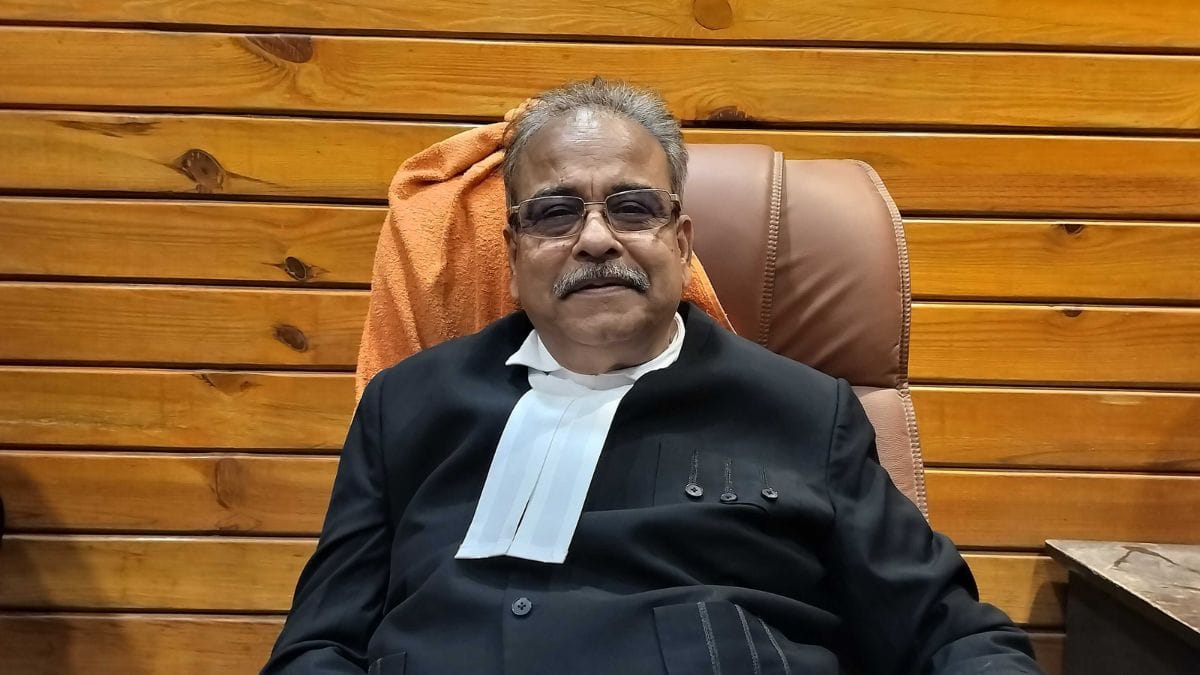
In judicial coaching institutes, when such orders are discussed, the female students get even more concerned about joining the profession. For Allahabad, where every other car has a marker of ‘advocate’ written on it, and judicial coachings abound, the great High Court is etched with a haloed image, and serves as the city’s conscience.
“As lawyers, it is not easy for a woman to practice in Allahabad, even in courts lawyers threaten female judges. But when we read what High Court justices really think through their orders, our hearts break,” a 25-year-old coaching institute student said. She is a first-generation lawyer from her family.
For senior advocate KK Roy, the Allahabad High Court’s judgment also shows a larger conservative shift in society. He also pointed out that sometimes judgments could be affected by the caste politics of a judge involved.
The Allahabad High Court is dominated by Thakur and Brahmin judges as well as advocates. Roy estimates that the Brahmin dominance consolidated with SN Mishra in the 1960s and 1970s, who was a strong leader, furthered by VC Mishra, who continued to have the power of the High Court bar council multiple times. “VC Mishra was quite a dangerous person when it came to caste politics,” Roy said. Brahmins continue to be the strongest caste lobby in the court, he added.
Women and scheduled castes are also not at the centre of the court’s politics, trying to climb up the social ladder from the fringes.
Over the last five years, the court has also seen a sharp turn in its approach to granting protection to interreligious or inter-caste couples. The court has increasingly been refusing to give protection. It is something that lawyers joke about in court corridors.
“So many gay couples have been asking for protection from the High Court,” one senior lawyer with balding hair remarked in the corridors, “Their petitions are usually dismissed. I say they must be dismissed with cost!”
What legal scholars can’t put a finger on is whether there is something unique at play at the Allahabad High Court or if it is just a reflection of a larger national mood.
But it would be unfair to single out Allahabad as the only court with controversial judgments, said Faizan Mustafa, Vice Chancellor of NALSAR University of Law.
“Some of the judgments make us question whether our High Court judges really know the law. It shows their utter ignorance. But it is not exclusive to the Allahabad High Court,” Mustafa said. “Like every court, it has conservative judges as well as progressive judges.”
‘Casual’ remarks in court
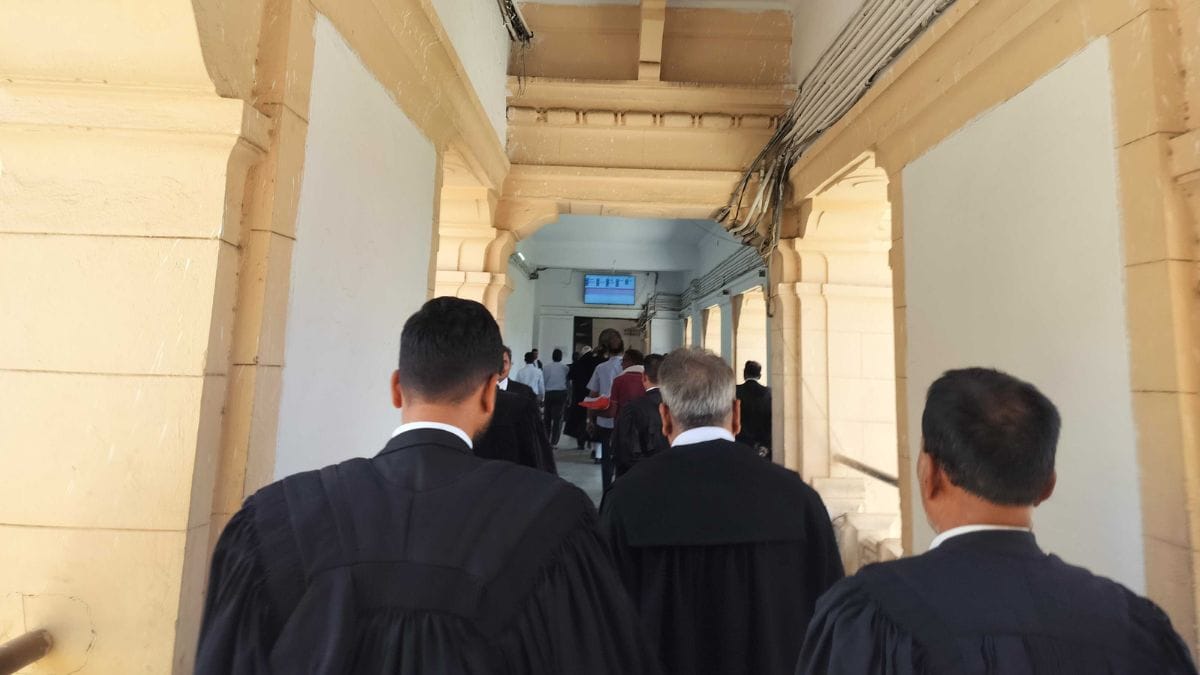
While Justice Yadav’s alleged bias is discussed in the open, gossip about the political proclivities of other judges hangs heavy in the air of the corridors. Incidents of politically charged ‘casual remarks’ have increased in the discreet courtrooms, almost all advocates interviewed by ThePrint said. An increase in such remarks was also flagged by senior advocates like KK Roy, Anil Tiwari, and Farmaan Naqvi.
“In one hearing, a judge had told me ‘laal peela kar denge’ (will beat you black and blue),” said a lawyer.
These remarks could range from caste politics in the country to the current political climate to an evolving society. Judges often blatantly express excitement about cases that might suit their political inclinations.
“There is one judge who is known to never give bail in cow slaughter cases, so lawyers avoid their cases getting listed in front of him, and always get the court to give them further dates for the hearing,” Rajvendra Singh, advocate and president of Adhivakta Manch, Allahabad, said.
In 2022, when a case regarding the appointment of a Sanskrit teacher landed in court number 7, advocate Rajvendra Singh was present. During proceedings, the judge informally expressed happiness at getting such a case.
“The judge said ‘I have been looking for such a case, won’t tolerate such grave injustice with Sanskrit under double-engine sarkaar,’” advocate Rajvendra Singh said.
And while judges are known to be strict with lawyers, some judges can get a bit too harsh. This also led to protests by the High Court Bar Association against judges’ behaviour, with the bar president noting, ‘judges are not gods’.
“In one hearing, a judge had told me ‘laal peela kar denge’ (will beat you black and blue). They can always scold us and tell us what to do, but is this kind of language graceful?” Mahaprasad, a Dalit lawyer, told ThePrint.
The premises of the Allahabad High Court are heavily guarded, and little of what happens inside—beyond what’s written in the orders—is known to the public. Transparency in the judiciary, though, is picking up momentum, with the Supreme Court and several High Courts across the country opting for live streaming of proceedings. But in Allahabad, streaming is still a work-in-progress, with judges saying that the ‘administrative’ side of the High Court has to take a call.
In 2020, a judge also bought tickets for advocates and encouraged them to watch Ajay Devgn’s film Tanhaji, Rajvendra Singh added.
The movie is about Tanhaji Mulsare, who launches a campaign against Aurangzeb after the Mughal emperor captured the Kondhana fort.
“I have heard one judge say so many times when encroachment issues are brought to the court that since people have been getting so many freebies like toilets, subsidies, and other facilities, they’re left without a job, so they’re filing court cases!” Senior Advocate KK Roy added.
On court notice boards, events organised by Akhil Bharatiya Adhivakta Parishad (ABAP) are often displayed, where sitting judges give talks on various issues ranging from the life of Swami Vivekananda to BR Ambedkar. But putting up these notices on the court notice boards is seen as objectionable by lawyers like Singh, arguing that ‘private bodies’ should not be allowed to put their notices on court notice boards.
“This [ABAP] is the only organisation that is allowed to put posters on the court notice boards, which are meant for operational information about a court,” he said.
ABAP’s head office is situated at Deen Dayal Upadhyay Marg in New Delhi. The organisation also publishes a quarterly magazine Nyay Pravah, which deals with various issues plaguing the courts, Acts being debated, and philosophies that should be adhered to. In its October-December quarterly issue, the magazine called the Waqf Act ‘a time bomb for the destruction of Bharat’, and makes a case for one nation, one election.
While the Parishad is closely linked in philosophy to the Rashtriya Swayamsevak Sangh, its Vice President, SP Rai, denies any RSS governance. He said the organisation works on providing justice to weaker sections of society and generating awareness about national issues.
“There have been no complaints by lawyers about notices on court notice boards. Anyone can put up a notice on the board,” Rai said.
Judges speaking at the events organised by the ABAP are making a lot of lawyers uncomfortable. “When you’re in touch with a particular organisation, how can you expect fairness from that judge at all?” BM Singh, president of BR Ambedkar Adhivakta Parishad, said.
Lawyer-judge standoff
“The Allahabad High Court is not a trash bin!” Anil Tiwari, the President of the High Court Bar Association in Allahabad, had roared after Justice Yashwant Verma took oath early morning on 5 April in the High Court.
Burnt unaccounted cash, reportedly around Rs 15 crore, was found in Verma’s house after a fire incident in Delhi, and he was transferred to Allahabad. The High Court bar association went on strike against his appointment, which lasted for almost a week.
The dramatic protests were against the “clandestine” way Verma’s oath-taking ceremony had taken place, “behind the bar’s back”. Hundreds of lawyers staged a sit-in protest in front of the High Court, demanding that Yashwant Verma go back.
This appointment has led the bar to start a campaign demanding transparency in judge appointments in the country. Tiwari organised a conference in Prayagraj where bar members from across the country spoke about casteism, nepotism, and corruption in courts.
The HCBA also refuses to call High Court judges ‘your lordship’, replacing it with ‘sir’ instead, and has passed a resolution demanding the same of all its members.
“The behaviour of judges is absolutely preposterous. They’re not gods. That is why the High Court bar decided not to address them as your lordships,” Tiwari said. However, this resolution stayed on paper.
The HCBA in July last year had also passed a memorandum against Justice Rohit Ranjan Agarwal for ‘insulting’ remarks. The HCBA had also noted that resentment in the entire ‘bar’ over the judge’s behaviour was rising.
The court is also facing resistance when it comes to judge appointments in the court, seen as a rather problematic exercise where relatives of judges get the first preference in appointments.
An earlier investigation by ThePrint had found that 36 out of 79 sitting judges of the Allahabad High Court (as on 25 March 2025) were related to lawyers or judges. At 45 per cent, this was significantly more than any other high court in the country.
Anil Tiwari said he fears that the Allahabad High Court is being undermined to build a stronger case for a bench in Meerut.
Also read: Legal pedigree not just entrenched in SC. 1 in 3 HC judges related to judges, ex-judges or lawyers
Then there is what many call the ‘Delhi imports’.
Now, the ‘infiltration’ of Delhi advocates, who are being elevated to judgeship, is giving an existential crisis to the lawyers. An informal list of 15 advocates who are rumoured to be elevated to judgeship in the Allahabad High Court has rankled lawyers scurrying around in the court’s corridors.
“If a lawyer has never stepped foot inside the High Court, how would a judge evaluate their capabilities? Lawyers from Delhi shouldn’t be elevated to judgeship here,” Tiwari said.
He added that merit doesn’t decide judgeship in Allahabad, network does. “Do the sons and nephews of judges have a right to the constitutional post of a judge? Will a lawyer from a different or humble background never get a chance to be a judge?” he questioned.
Tiwari fears that the Allahabad High Court is being undermined to build a stronger case for a bench in Meerut. The Meerut bench has been a decades-long controversy—lawyers don’t want it, fearing takeover by ‘Delhi lawyers’ and loss of their own business.
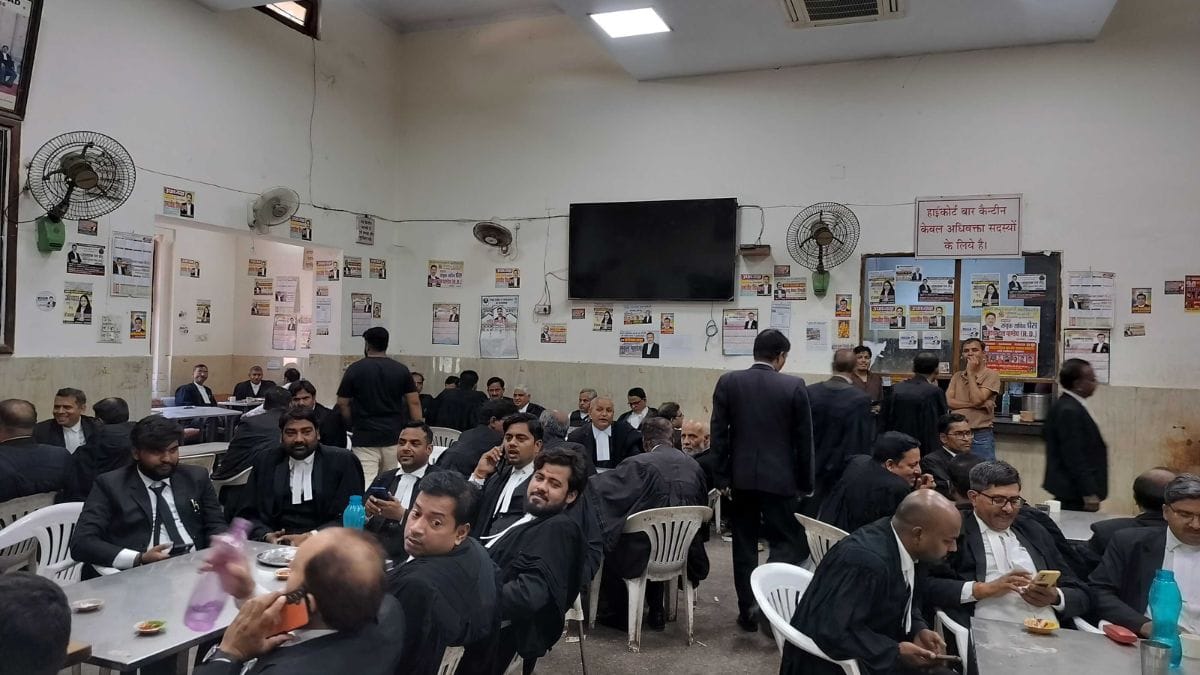
Lack of representation
The hall of North Central Zone Cultural Centre in Allahabad quaked with thunderous applause, as lawyers sitting in the audience cheered on for NN Tripathi of Bar Council of India, Delhi, highlighting beta-bhatijavaad (nepotism) in the Allahabad High Court.
“Half the advocates belong to political parties, the other half are silent. And the remaining are stuck in brahminvaad and lalavaad!” Tripathi roared while talking about corruption in the courts.
He was speaking at a conference organised by the HCBA on the ‘transparency’ in the appointment of judges. Members of eight bar associations spoke about the increasing politicisation of India’s judiciary, pressures on lawyers and courts, and made a ‘resolution’ to restore the public’s faith in the judicial system.
“Say it louder!” one lawyer in the audience cheered, almost jumping up from his bench. “Nobody talks about the caste entrenchment in our court,” he told ThePrint later, “the casteism in the court reduces opportunities for those of us who don’t have connections.”
The chamber corridors of the High Court are lined with tables and chambers bearing surnames like Tripathi, Shukla, Srivastava, Singh—lawyers who sit together in clusters.
“Forget lawyers, even judges are always dominated by Brahmins and Kayasts in this court,” KK Rai said, “Dalits are making efforts but outside in the corridors, inside the court they have no presence,” he added.
Former judges also decry entrenched caste systems in the high court which rule the politics of it. “The High court’s bar is very caste ridden and things are not decided upon their merit, most of the time the caste sentiment plays a huge role,” retired judge Janardhan Desai said.
Since 2022, only one Scheduled Caste judge has been appointed to the court. Senior advocates say there is only one SC judge in the court.
Dalit lawyers say that when they use the surname ‘Kumar’, it’s never enough for other advocates in the High Court. They always ask, with a smile, for their ‘real’ surname.
“They refuse to shake hands with us once they realise we’re from the Dalit community,” Mahaprasad added. Another lawyer said that it is difficult for Dalits to get clients even from their own community because there is a perception that only Thakurs and Brahmins make good, competent lawyers.
“While caste politics ails any other court in this country, in states of Uttar Pradesh and Bihar, it is even more pungent and must be looked at,” Dhavan said.
In lawyer chambers, jokes are cracked on caste identity. Poems composed on every caste stereotype are narrated inside the chambers as people laugh. These poems mock various caste and religious groups based on overarching stereotypes—about Muslims, Jatavs, and Bhumihars in a very derogatory manner. Caste blocks operate in silos, and a majority of lawyers don’t mix with people of other castes.
Former Chief Justice of Orissa High Court, S Muralidhar, also highlighted the caste system within the putrid Allahabad High Court, by citing the instance of a judge who ‘purified’ his chambers with gangajal since the last occupant was a Dalit, reportedly a judicial officer.
Lawyers are not aware whether any of the serving judges belong to the Scheduled Caste community or not. According to the Supreme Court’s collegium list recently made public, since 2022, the collegium has appointed one justice who belongs to the SC community.
“Neither have we heard about a designated senior woman counsel, nor have we seen her,” a lawyer said.
The representation of women in the High Court is also marginal, but steadily increasing. Dedicated chamber rooms have been constructed for women lawyers, who sit clustered away from male lawyers, even taking care of their kids in the after-school hours. Many judgments, especially bruising to women, are churned out of the High Court, where women do not have a prominent voice in its politics.
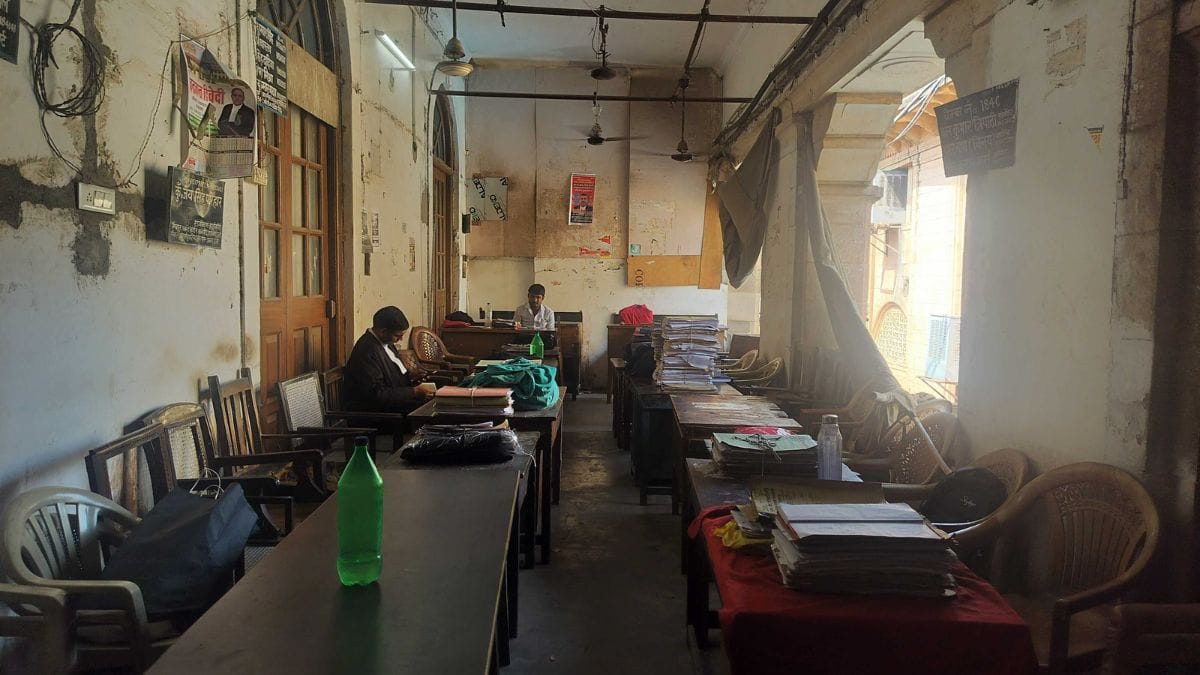
“Neither have we heard about a designated senior woman counsel, nor have we seen her. Ramodevi Gupta was the only designated senior. This shows that the bar and the court have a certain prejudice,” Fatima Anjun, another lawyer, said. Ramodevi Gupta is a former senior advocate whose stardom still shines bright in the court, as many remember her.
An extremely overburdened court
“Everyone has their own agenda in the appointments, which is why the vacancies are so high,” said an advocate.
For the last five years, 26-year-old Avdhesh Singh has been taking the train from Punjab’s Ludhiana to Prayagraj, but is yet to see the face of a judge. His hearing keeps getting pushed. Five years and multiple lawyers later, Avdhesh wants to give up on the land dispute case that drags him back to court again and again. But his grandfather’s last wish coerces him to keep coming back to the labyrinthine court, where his story, or his grandfather’s, might never reach a resolution.
“I had promised my grandfather on his deathbed that I would fight for his land. Our farmland is disputed, and even though we had a favourable order from a district court in 1998, we have never been able to use it,” Singh said.
Avdhesh is just another name in a multitude of long-pending cases in India’s courts.
Lawyers complain that even fresh filing of cases is currently facing a backlog of six months to one year, which used to happen within three days before Covid-19.
The complaint about the delay in the fresh filing of cases comes from lawyers across the board. Tiwari, the president of the Bar association, said that the digitisation of filing, which happened post-2020, has not been smooth, which has led to terrible delays.
Senior advocate Satish Trivedi has filed a Public Interest Litigation (PIL) in the court stating that “This honorable court is facing one of the gravest crises in history”. More than 50 per cent of the positions remain vacant.
When it comes to the appointment of judges, many states are in a logjam because of how highly political the process is.
The Supreme Court website explains just how complicated the appointment process for High Court judges is. The collegium comprises the Chief Justice of the High Court, along with two senior-most judges, who consult with eminent members of the High Court bar and other judges before deciding upon names.
These names are sent to the Chief Minister of the state, with advance copies to the governor, Union Law and Justice Minister, and the Supreme Court collegium, who then take a collaborative decision based on intelligence inputs on the judge, as well as interviews.
“The delay in appointments is because of the judge-state-Centre nexus. Everyone has their own agenda in the appointments, which is why the vacancies are so high,” an advocate said on the condition of anonymity.
Entering this politically charged place are litigants like Yadav and Singh looking for resolutions to their problems.
But even when a case is heard in the grand wooden courtrooms of the High Court, where judges sit on throne-like teakwood benches and decide the fate of millions—an 18-year-old now believes nothing comes of it.
“My abusers keep telling me there will be no justice for me. They own the courts and the government. My experience has shown that they are right.”
(Edited by Ratan Priya)



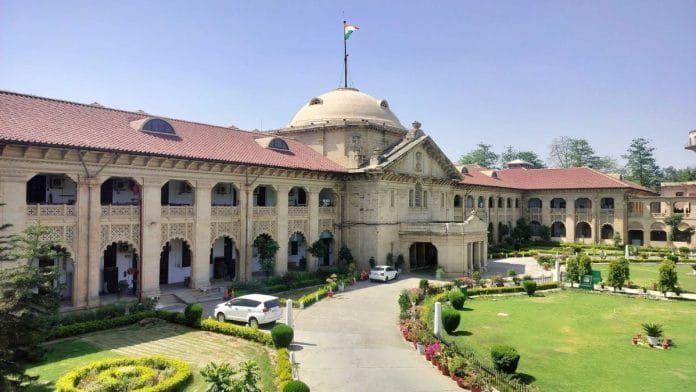



Article seems to focus on castes more than anything else. Looks like upper castes are the only perpetrators in UP.